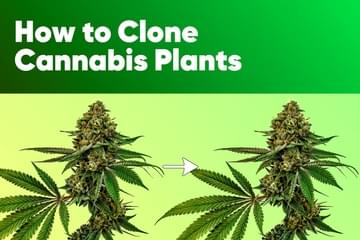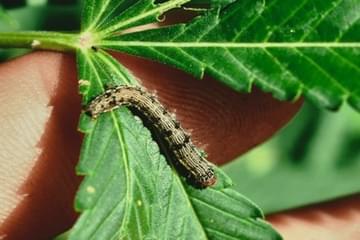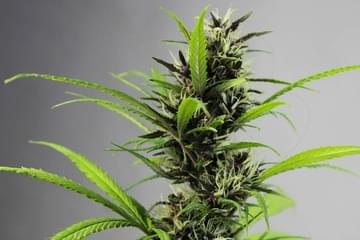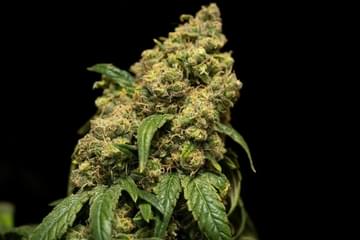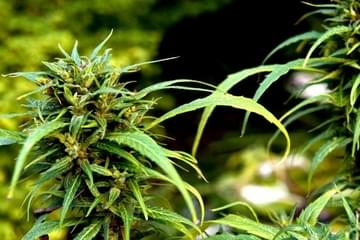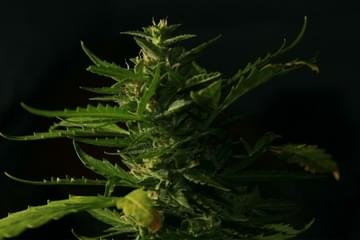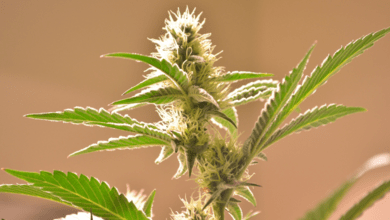
How to Increase Trichome Production to Get Better Looking Weed
Published on 4/14/22
If you're growing your own weed, you may have noticed that it doesn't always turn out looking like the healthy plant you want it to be. There are a lot of factors that go into how your cannabis plants look. If you're wondering how to get better-looking weed, one of your better solutions is to increase trichome production. In this article, we'll dive into how to boost trichome production and grow the best-looking weed possible.
What are Trichomes?
 Unsplash
UnsplashTrichomes are small crystalline, hair-like glands that grow on the surfaces of plants to protect from invasive insects, rodents, fungi, and other invasive species that might cause harm. They are also helpful in preventing damage to plants during harsh weather or exposure to harmful ultraviolet rays. It should be noted at the onset that trichomes are not exclusive to cannabis - trichomes are found on the majority of plants and are as instrumental to other types of plants as they are to cannabis.
While they may not be specific to just cannabis, trichomes are a critical part of cannabis physiology. These crystalized glands produce a resin that holds the majority of a cannabis plant's cannabinoids (which include CBD and THC). Without trichomes on cannabis, there would be no high and many medicinal benefits wouldn't exist within the plant. So, not only do they protect cannabis from natural harm, but they are also primarily responsible for the beneficial (and recreationally enjoyed) side effects that have made cannabis so popular. It makes sense that increasing the production of trichomes on a cannabis plant will improve its overall health - they make cannabis more potent and more resilient against insects, animals, and disease. If you can manage to increase your plants' trichome counts, you will likely have a much more enjoyable final product on your hands (and your cannabis will look way better).
How to Increase Trichome Production
Fewer trichomes mean less potency in psychoactive and medicinal effects, less aroma, and a worse-looking, potentially unhealthy plant. The goal, then, should be to get more trichomes before harvest. We recommend checking out a few of these tips for producing more resinous, cloudy trichomes.
Correct Grow Lights
Proper lighting is likely the most critical aspect of growing consistently healthy cannabis. If you're a home grower, you'll probably only need a few lights (most states limit grow amounts at 6 to 12 plants). These lights need to be set directly above your plants, with as much of the light being cast upon your plants' upper canopy of leaves and flower as the plants grow. A general rule of thumb is that the more light (higher wattage) you have, the bigger your yield. LED lights have only recently been applied to growing cannabis. Still, they've proven to be highly effective - this is our recommended light for increasing trichome production and an overall healthier plant.
Proper Nutrition
 Unsplash
UnsplashYour cannabis plants need nutrients to thrive, and they need different nutrients at different growth stages. When your plant is flowering, you'll want to invest in macronutrients, micronutrients, and additional vitamins and amino acids. The primary macronutrients can be remembered using the acronym NPK, which stands for nitrogen (N), phosphorus (P), and potassium (K). Other important macronutrients include calcium, magnesium, and sulfur. The micronutrients you'll want are manganese, boron, iron, molybdenum, zinc, and copper. There are a lot of fertilizers on the market - make sure they contain these primary ingredients for a healthy grow cycle to produce lots of trichomes.
Monitor Temperature and Humidity
One of the more common questions asked when trying to produce more trichomes is, "Does cold produce more trichomes?" While you don't want your plants growing in freezing conditions - yes, colder temperatures do encourage increased trichome production. Heat is a natural enemy of healthy cannabis. You'll want to keep your grow room situated around 65 degrees Fahrenheit for higher resin yields. Humidity is also critically important - too high, and your plants will mold; too low, and the plants will be too dry to grow properly. 50% humidity is a strong middle point, although you may want to lower humidity levels to 30-40% in the final weeks of the grow cycle.
Controlled Irrigation
 Unsplash
UnsplashA less obvious tip is to keep your plants in controlled hydric stress conditions. If your plants are given just enough water to survive, they increase metabolite production (meaning more trichomes and cannabinoids) and thrive. Studies show that overall cannabinoid yields grow upward of 50% when plants are kept in a state of slight drought. Since trichomes and the cannabinoid-heavy resin produce most in the flowering stages, it's most important to induce a slight drought toward the end of your plant's grow cycle. Just make sure not to overdo it and starve your plant of the water it needs to grow.
How to Tell When to Harvest for Maximum Trichomes
As the cannabis plant, there are different trichome stages during growth. The most important period of growth is during the flowering stage, near the end of your plant's growth cycle. To check the status of your trichomes, you'll likely want a microlens - trichomes are quite small. Your trichomes will first appear to be clear like glass - they are their least potent at this stage. A few weeks after they first appear, trichomes will begin to turn cloudy with milky white coloring. When your plant is covered in milky trichomes, you know you're plants are harvestable. You can, however, wait a little longer until some of the trichomes grow amber - at this point, the THC is breaking down into THCA. Experiment with the point at which you harvest, the cloudy to amber trichome ratio is a personal preference.
Do you grow your own cannabis? Let us know what tricks and tips you have for how to get more trichomes and grow the best-looking cannabis possible! Comment below.









